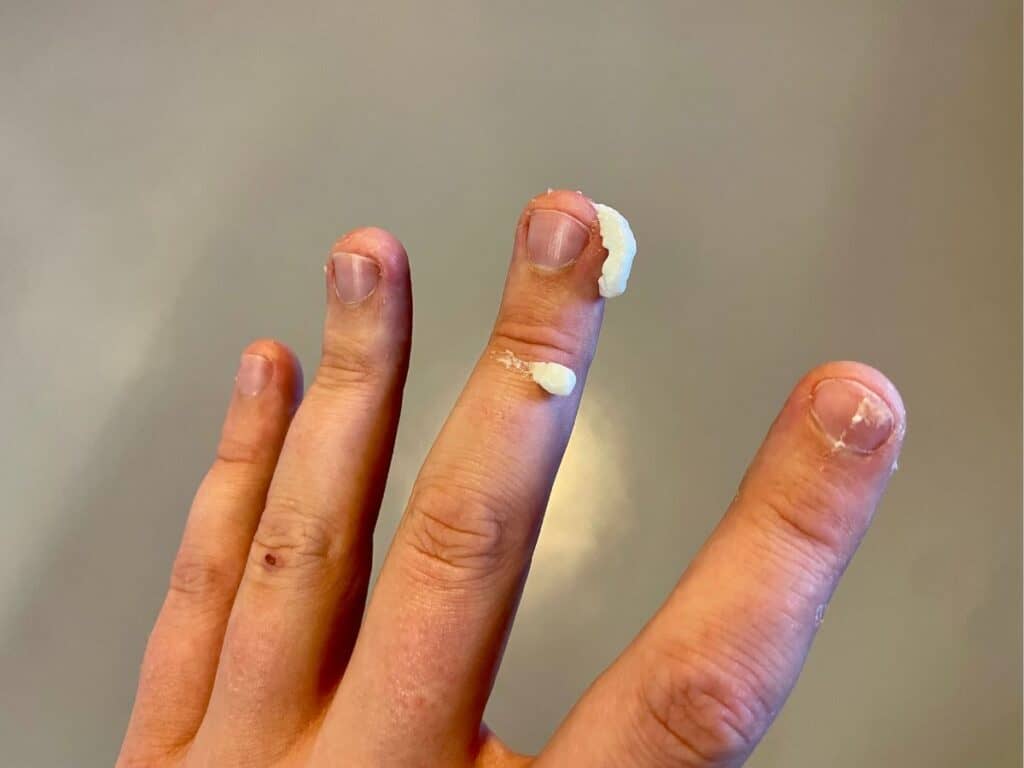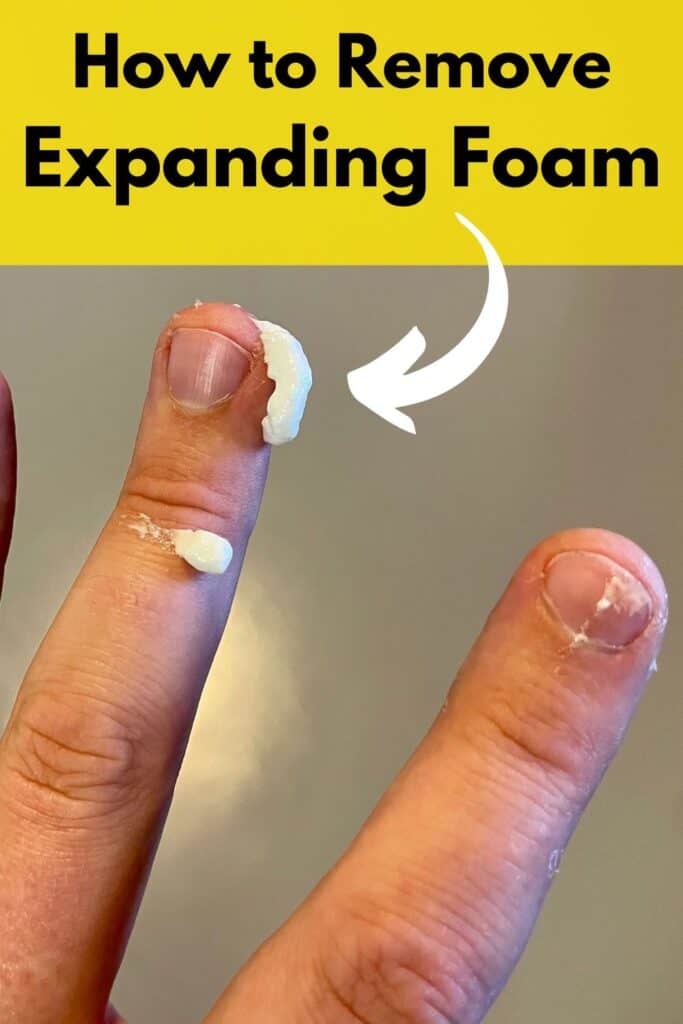Expanding foam is a popular sealing, insulation, and energy preservation substance. However, even with all its uses, it has its downsides.
Once expanding foam lands on the unintended surface, it forms sticky, stubborn stains that are hard to remove. But if you’ve it on your clothes or skin, panic not.
Because in this article, I will share tips on cleaning both wet and dry expanding foam from the skin, clothes, or any surface.
The quickest way to remove expanding foam from skin and clothes is to use acetone or nail polish. Whether you’re removing wet or dried expanding foam, use any of the two cleaning solutions for great results.
How to Remove Expanding Foam From the Skin

To remove uncured expanding foam from the skin, use a dry cloth piece to wipe off as much loose material from the stain as possible.
The next step is to use acetone to remove the stain from the skin.
Acetone is a well-known solvent used for cleaning tough stains, like expanding foam. In the absence of acetone, nail polish remover is a worthy alternative.
To use any of these substances, apply it on another cloth piece or on the clean section of the first one and use it to rub on the stain spot.
Once enough foam has been transferred to one section, apply the solvent to another section, and continue rubbing until the stain is eradicated.
Removing cured foam stains will require more tricks. One hack is applying solvent to the skin and covering it for hours to soften the stain.
If the stains are on your hands, fill halfway one of a pair of gloves with dish soap and water solution. Next, carefully wear the glove with the solution in it, and fasten it around your wrist with a rubber band or tape.
Leave it this way for a minimum of an hour to soak the stain. After this period, the stain will have softened for easy removal.
Remember, other than the hands; you can apply this method to other parts of the body with a stain spot. All you have to do is apply vaseline or vegetable oil and cover the section with duct tape.
Other methods include using a pumice stone to scrub it continuously, especially if it is on the palms, or using commercial solvents.
However, remember most commercial solutions may have adverse effects on the skin and are not recommended.
For any of the methods above, finish it off by washing with warm water and soap before applying moisturizer or lotion to soothe the skin.
Removing Expanding Foam From Clothes
Removing the foam stain from clothes largely follows almost the same procedure as above, with a few variations. First, you need to put on gloves to avoid contaminating the skin as well.
If you are dealing with fresh foam stains, use a dry cloth to wipe off as much of it from the fabric. For dry stains, you can scrape off with a blunt knife to remove the loose part of the stain.
Next, pour some acetone or nail polish remover, and use it to blot the stain out. However, be sure of these cleaning agents’ compatibility with the fabric. Remember, not all fabrics are compatible with them.
For instance, avoid using acetone from all delicates, such as silk, acetate, and triacetate, as they can easily be dissolved by it.
The common formula for checking compatibility is to read the care label. Alternatively, you can test on an indiscreet spot and see how it reacts.
For cured stains, removing the stain might be challenging. But you can try two methods to do this. First, you can use a hard scrubbing tool such as a nail file or pumice stone and work on it until it is gone.
Just remember not to over scrub to avoid damaging the clothes fabric.
If all this fails, you can resort to soaking the spot with polyurethane stripper or mineral spirits applied on the reverse of the stain spot. Then wait for 30 minutes before washing normally and rinse and dry.
How Can I Remove Spray Foam From Wall Paint?
While acetone or nail varnish remover is effective against spray foam stains on other surfaces, do not use it on wall paint. This is because you risk ruining the wall paintwork as well.
For that reason, you might consider other cleaning agents, such as using white vinegar. You can add ½ a cup of white vinegar to 1 liter of water and stir well to make a solution.
Then use a towel or microfiber cloth to scrub on the expanding foam stain gently. Repeat the process of dipping the cloth into the solution and scrubbing continuously until the stain is removed.
How Can I Remove Expanding Foam Stain From Vinyl Window Frames?
First, scrape as much of the loose stain material from the vinyl window as you can. Do this as gently as you can to avoid tampering with the finish on the window.
Next, pour some acetone on a cloth rag, and use it to rub on the stain several times until the stain is removed.
You can then use a fresh cloth piece with warm water and soap to clean the residues before rinsing off for a clean finish.
Frequently Asked Questions
Does WD 40 Remove Expanding Foam?
WD 40 is an excellent sustain remover that can easily dissolve the expanding foam stains, whether on the skin or clothes.
All you have to do is wipe the spot to remove the loose stain materials and then apply WD40. Soak a little more on another rag and use it to rub the skin, or blot with it the stain on the cloth.
Does Spray Foam Come Out of Clothes?
It is easy to remove fresh spray foam stains from clothes. Older spray foam stains are also removable but require more effort.
Nail polish remover or acetone are some of the most effective solvents for removing expanding foam stains.
And the best part is these are readily obtainable from most home improvement stores, pharmacies, or online.
Can Baby Powder Remove Spray Foam?
Baby powder is excellent in removing fresh expanding powder stains. Just grab a baby powder can, sprinkle some powder on the fresh expanding foam stain, and let it stay for 30 minutes.
Over this period, the baby powder goes to work, absorbs all the moisture from the spot, and makes it dry. All you have to do next is to peel it off the skin.
I also wrote a guide on how to remove rust stains that may interest you to read next.


I’m an expert wardrobe organizer and a bit of a clean freak. I created this website and its YouTube channel to share practical guides about laundry and organizing. My teachings have been featured in multiple large news publications, and I’ve self-published two wardrobe organizing books and an entire course on the subject.
